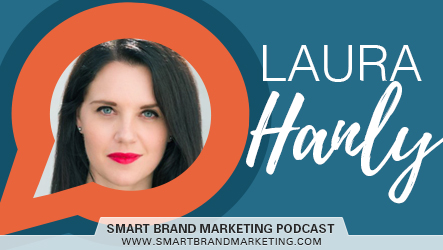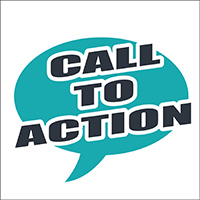Podcast: Play in new window | Download | Embed
Today’s Guest

Laura Hanly joins the 61st session of Smart Brand Marketing.
I’m heading to the Traffic & Conversions Summit at the end of February. My FB feed showed that Laura is doing an event right around that time. I will not be able to attend so thought it would be great to get her on the show and have a chat about it.
Laura lives in Lisbon Portugal with her husband. They made me feel super welcome when I came to visit the city. I knew that she was into writing but was not aware of just how much she has accomplished since that time.
She wrote a book, got clients with it and is now teaching others her process.
TOPICS DISCUSSED
- Purpose of a book
- Marketing plan before writing
- Blueprint to a bestseller
- How to get a book to pay for itself
- What its like being a ghostwriter
- Calls to action
- Funnels
- Formula for a perfect title
- Favorite tools
- What’s next for Laura in 2018
Enjoy!
Creating Content that Converts: How to Do It Properly
Conversion is a huge issue amongst marketers and business owners in the online market. After all, the only way you can gauge if a marketing campaign is if the traffic you draw in to your website converts from a passive audience to paying customers.
Arguably, how your business fares as far as conversion is concerned depends greatly on the content you put out there. As such, it would be a good idea if you can write content that not only informs or entertains but will eventually help that audience complete all the necessary steps for conversion.
The question is “is this possible?” or, better yet, “is this applicable to any business model? The answer is on the positive for both and, in order to do so, there are a few things that you have to know about first.

DI I have to Market First before Writing?
The answer is yes. Although this can be counter to everything you might know about marketing (primarily that you have to have something to market first before you start marketing) doing your marketing while your content is being written will actually be beneficial to you in the long run.
Think of it this way, the time you spend creating your content to market can actually be used to build interest for it. For example, if you are writing an eBook, you can take any spare time you have to go back to your email list or go to your social media page and update them with your plans.
In turn, your audience can also give their insight on some topics you might not be too familiar with or clarify some misconceptions you might have written in your draft. Not only does this allow you to interact with your customers while the content is still being produced but you can address issues in it effectively in every step, saving you a lot of time and money editing it later on.
When you get your customer base involved in the creation of your content, they become more invested towards it success. In effect, you are conditioning them to your product first before they even see it. The more they get interested in your product to the point that they will consume every teaser or update you give for it, the more likely it will be that your content will rank higher in the search engines once it is published.
The Blueprint for Content Creation?
So, how do you exactly go about creating content that will generate a lot of sales and traffic in the market? This will vary from one content type to another but the process will follow roughly the same steps.
-
1. Defining the Purpose

What exactly are you going to write about? To answer that, you must determine what kind of purpose does your content serve for your business. Content is often written for purposes like:- Brand awareness
- Lead generation
- Networking
- Advertising
Aside from the role your content plays in your business, you should also identify the overall topic you would want to discuss in your business. Regardless of what topic you want to talk about, it is best that you make sure that the subjects covered are a). Something that you are confident to talk about and b.) Plays a role in reaching your business’s goals. -
2. Laying Out the Narrative
Once you have identified the main topic for your content, you would then have to plan a map of sorts that your audience can follow through. Your narrative always begins with you posing an issue or question which you can then answer as the story progresses.
For example, you are the owner of a cleaning business and would want to publish content that deals with deals with cleaning issues. One of your content might deal with a topic like how to clean tabletop while the subtopics would include different cleaning techniques and strategies for different tabletop surfaces.
Whatever topic you might have planned, it should follow the same narrative formula: Problem-Solution-Conclusion -
3. Production

This will take up a large portion of the process since it deals with you actually creating your content. Writing your story should be easy if you have an outline to follow. In most cases, you already have formed some ideas as to what you are going to say in the content and only need to fit it in the narrative.However, most writers encounter a problem when writing content and that is overanalyzing. Will the sentence fit the narrative? Is it well-structured grammatically? Is it compelling enough? What about spelling, and punctuation?
If you start thinking these, here’s a tip: write away. Don’t stop for a second to think about whether or not your story will look good after every sentence. Let your thoughts flow freely into your hands as you type. Save the editing and proofreading once you have finished the ending sentence of the last paragraph.
-
4. Pre-Launch Preparations
Once you have the bulk of your content written, you would then have to make it presentable to your audience. This part of the process includes editing the format, adding other media like videos, and images, creating the table of contents (if it is a book), and cutting unnecessary content.
This is where your marketing comes into play as you build up interest in your content. If you have simultaneously done the marketing with your content creation, then you should have generated enough interest for what you are about to publish now. Also, doing a bit more marketing before everything goes online does not hurt.
-
5. The Launch

After everything has been set up, all that is left is for you to publish your content. In here, you should take note as to how your content is being consumed by the market. Some feedback from reviews might also help as this will give you an idea where you should improve on the next edition.
Some forms of content would also allow you to do live updates to improve on what you published. Whatever the case, it is a must that you maintain a strong presence online immediately after your content is published.
The Call to Action
Although the bulk of your content will do all the convincing to your audience that what you offer works, the call to action will do that final push to convert them into a loyal (and paying) customer. So what does an effective CTA looks like? Here are a few qualities.
-
1. Value

Always remember that people don’t convert just for the heck of it. If you request them to do something, then your audience is looking for something of equal value in return. Your CTA should be able to convince your readers that what they will do for you will ultimately be beneficial for them.
-
2. Visibility

Simply put, your CTA should be placed somewhere where it can be seen by all at a glance. After all, how else are people going to complete the conversion if they can’t see your call to action? You can make your CTA visible by putting them on a separate paragraph if it is text-based or as a separate pop-up page if it is an ad-based CTA. The goal here is to get their attention long enough for them to decide on completing the process for you.
-
3. Personality

Do you know what a normal, everyday person has over a corporate brand? The ability to be trusted more. In CTAs, people tend to trust those that were made with a personal, unique twist as opposed to a soulless and blatant marketing line. This is more important in text-based CTAs as you have nothing else to rely on to make it stand out other than the way you write. Keep yours as unique (an quirky) as possible to get your audience to respond.
-
4. Clarity

When it comes to compelling people to do or buy something, clarity is king. Your Call to Action must let consumers know exactly what you want from them and what it is they will be signing up to. Also, you need to highlight all the properties that make your business stand out from the competition to give your audience that extra bit of assurance.
-
5. Concise

Most call to actions do not have the luxury of space big enough for you to explain everything about your business. Find a way to tell everything that you want about your business within a single paragraph or less in your CTA.If you think this is possible, don’t worry. Always remember that you can always include a link on the call to action for those who need a bit more convincing before they fully convert.
Creating Your Title
Of course, you can’t do much convincing in your content if you can’t find a way to lead enough traffic to it in the first place. That’s why you need to make it as catchy as possible.
Creating the perfect title can be a bit of challenge but you should get the hang of it with a few tips.
-
1. Be Emotional With Your Adjectives

Do you know who uses adjectives like “effective”, “easiest”, “strongest”, and “best” most of the time? Machines. And keep in mind that machines don’t know a lot about establishing that emotional connection.If you want to get your audience’s attention, look for words that trigger an emotional response. Instead of “easy”, why not use “effortless”. Aside from adjectives like “Top” and “Important”, you can use words like “Absolute” and “Essential”. If you can appeal to that “human” factor first with your title, you should have no problems in getting the reader’s attention for the rest of the content.
-
2. Be Rational

This is quite effective when it comes to list-type articles since they are becoming a bit derivative these days. Nouns like “Reasons”, “Facts”, “Strategies”, “Tips”, “Principles”, and “Secrets” appeal to the more rational part of the brain as it gives the impression that your article has something of value to give. If possible, never use the word “thing” as that is the most generic word that you can ever use. Most readers get turned off by that.
-
3. Answer the What, When, How, and Why

When formulating your title, you should always remember that it should at least answer one of these four questions What, Why, How and Where. In most cases, you can even use these words in your title usually after a number or a noun such as “Top 5 Reasons How…..” or “The Fact Why….”The point here is that they are actually trigger words in the sense that they give the brain a clue to the overall theme of the article. Also, they tend to give the overall article a somewhat authoritative or assertive tone.
-
4. Be Bold (But Don’t Lie)

Your title should offer something to your reader without giving away too much of the plot. Will your article teach them something new? Will they receive a piece of information that will finally link two mysteries together? Will it tell them what the best Philly cheese steaks in (insert place here) are?Whatever the case, your title should challenge the person to go through the entire article. Once you have got them hooked, the best that you can do is hope that whatever your content says will deliver on what the title promised.
In Conclusion
Despite all of these tips, you must remember that conversion is something that is beyond your control. Whether that audience member completes the steps to convert or not is something that only that person can answer.
However, you can do your part in compelling them that something of value is in offer in your content and with more to come if they do something for you. If you plan everything right, from the content you will make to the marketing you will for it, you might just convince your readers to get back for more.
What other content creation methods have you used? Did they result in better conversion rates for your content? Let us know in the comments below!
References:
https://www.articulatemarketing.com/blog/the-qualities-of-an-effective-call-to-action
https://www.articulatemarketing.com/blog/the-qualities-of-an-effective-call-to-action
RESOURCES
THANK YOU FOR LISTENING!
To get more SBM content sent directly to your device as they become available, you can subscribe on iTunes or Stitcher!
Also, reviews on iTunes are extremely helpful and greatly appreciated! I read each and every one of them, and feel free to share your URL there so I can contact you later on and say thanks!
If you enjoyed this episode you may also love listening to:


